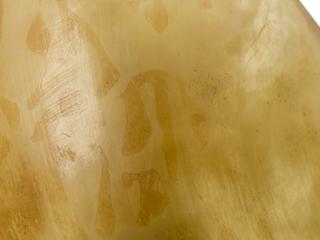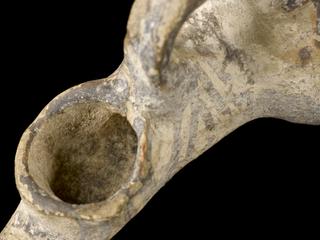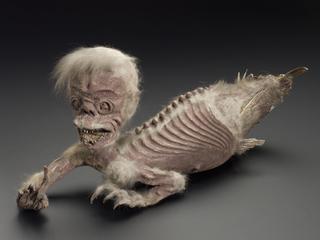

Amuletic iris root, anthropomorphic, supposed to have curative powers, carried by Jews in Whitechapel 1900, part of Lovett collection, English, 1891-1900
Anthropomorphic objects are those whose shape resembles that of a human. They have often been attributed with special powers or healing properties. This piece of iris root, with its vaguely human shape, was believed to have curative powers. It may have been used to reduce the pain of teething as iris root rubbed on the gums was a well known way to relieve pain.
This object was acquired in Whitechapel, in the East End of London, in 1900 by Edward Lovett (1852-1933). Lovett was a collector of British amulets and charms and documented different medical traditions and beliefs. He believed that carrying such roots was a particularly Jewish custom.
Details
- Category:
- Ethnography and Folk Medicine
- Collection:
- Sir Henry Wellcome's Museum Collection
- Object Number:
- A132420
- Materials:
- root, iris
- Measurements:
-
overall: 26 mm x 75 mm x 25 mm, .015 kg
- type:
- iris root
- credit:
- Lovett, E.R.




